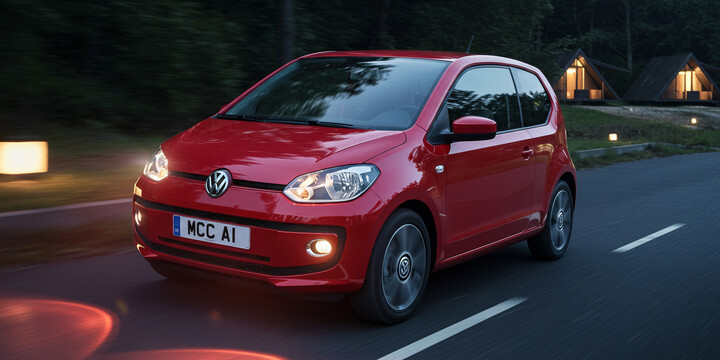
VOLKSWAGEN UP! (2016-19) 5DR HATCHBACK 1.0 75 EU6 UP! BEATS ASG AUTO5
The VOLKSWAGEN UP! (2016-19) 5DR HATCHBACK 1.0 75 EU6 UP! BEATS ASG AUTO5 is a compact and stylish city car, perfectly suited for navigating urban environments and everyday commuting. As part of Volkswagen’s popular UP! range, this hatchback combines practicality with a fun driving experience, making it an ideal choice for first-time drivers, small families, or those seeking an efficient and reliable ride. Its compact size means it’s easy to park and maneuver, while its modern design and well-equipped interior ensure comfort and convenience for daily use.
What makes the VOLKSWAGEN UP! (2016-19) stand out in its class are its impressive fuel economy and reputation for reliability. This particular model, featuring the 1.0-litre engine and advanced EU6 emissions standards, offers an economical drive—perfect for reducing running costs. Known for its durability and ease of driving, the UP! is often compared favorably with rivals like the Hyundai i10 or Kia Picanto. With a typical mileage around 20,471 miles and a modest number of previous owners, this vehicle strikes a balance between affordability and proven dependability, making it a smart choice for those looking for a compact, efficient, and well-maintained used car.

average use

The most recent mileage readings for the VW Up! (2016-19) 5DR Hatchback 1.0 75 EU6 UP! BEATS ASG Auto5 show that half of the vehicles (50%) have recorded mileages between 10,000 and 20,000 miles. Additionally, 25% of these vehicles are recorded in the 40,000 to 50,000-mile range, while the remaining 25% fall within the 20,000 to 30,000-mile bracket. This distribution indicates that the majority of these vehicles are relatively low-mileage, suggesting they are likely to be lightly used and potentially more desirable to buyers seeking a less-worn car.

vehicle values

The private sale valuations for the Volkswagen Up! (2016-19) 5DR Hatchback 1.0 75 EU6 Up! Beats ASG Auto indicate that the most common asking price falls within the £7,000 to £8,000 range, accounting for 50% of the listings. Additionally, 25% of private sales are listed between £6,000 and £7,000, while another 25% are priced from £9,000 to £10,000. This suggests a fairly concentrated market with the majority of private sellers positioning their vehicles around the £7,000 to £8,000 mark, reflecting a balanced view of the car's value within this specific model range.

production years

Based on the available data, all of the Volkswagen UP! vehicles in the sample manufactured between 2016 and 2019 were produced in the year 2017. This indicates a complete concentration of the model's production within that single year, suggesting that the 2017 models are predominant for this particular vehicle type in the dataset.

colour popularity

The data indicates that the majority of Volkswagen Up! models (2016-19) in this sample feature a red paint colour, accounting for 75% of the vehicles. Conversely, black is significantly less common, representing only 25% of the vehicles. This suggests that red is the predominant colour choice for this model during this period, potentially reflecting consumer preferences or marketing trends.

ownership cycle

The data indicates that for the Volkswagen Up! 2016-19 5DR Hatchback 1.0 75 EU6 UP! Beats ASG Auto5, half of the vehicles (50%) have only a single registered keeper. The remaining vehicles are split evenly between those with three keepers and those with five keepers, each constituting 25%. This suggests that a significant proportion of these vehicles remain with their original owner for extended periods, while a smaller but notable share have been passed through a few previous owners.

engine choices

The data for the Volkswagen Up! (2016-19) 5DR Hatchback 1.0 75 EU6 UP! BEATS ASG AUTO5 indicates that all vehicles in this model employ a 1.0-liter engine capacity and run exclusively on petrol. This consistency suggests a standardized engine specification across the entire sample, highlighting the model's uniformity in engine size and fuel type. Such standardization can be advantageous for maintenance and parts sourcing, and it reflects the vehicle's design focus on efficiency and practicality within its category.












